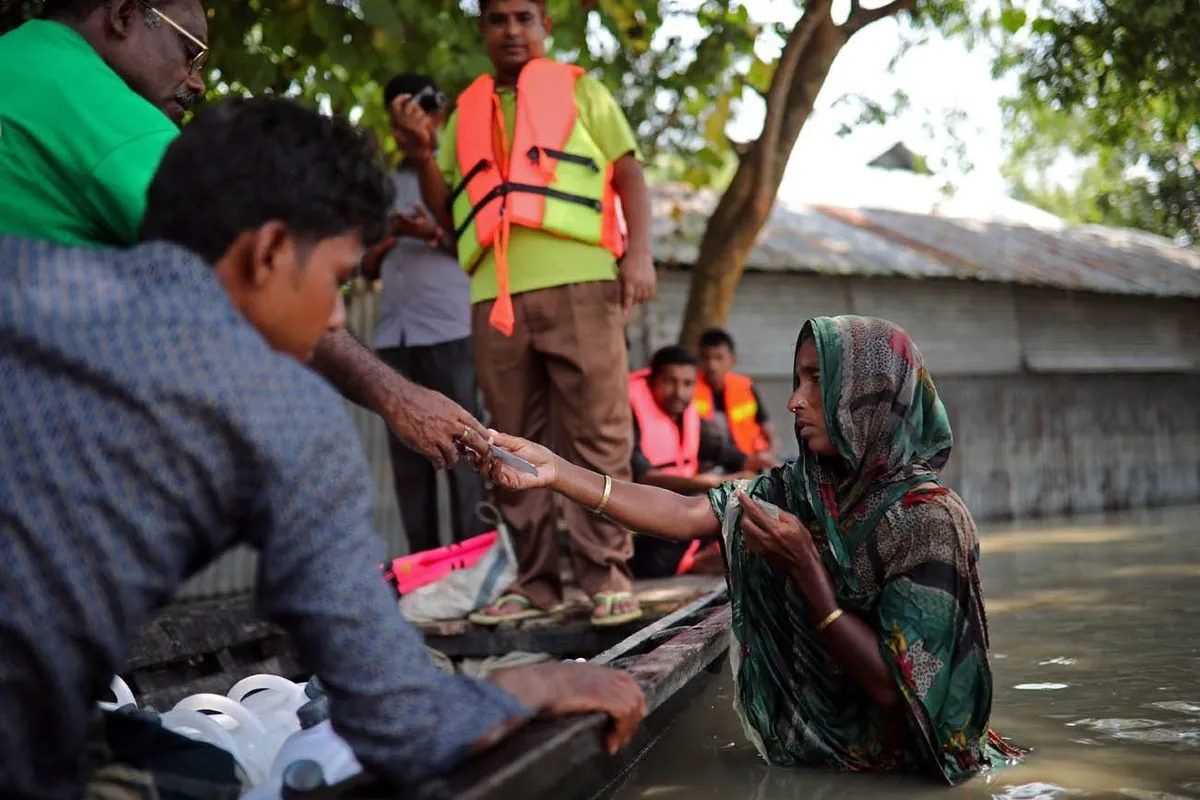Devastating Floods in Bangladesh Affect Over 5 Million People
Severe monsoon rains in Bangladesh have led to widespread flooding, affecting more than 5.2 million people and causing at least 20 fatalities. The interim government is working to provide relief and support to those impacted.

Severe flooding in Bangladesh, caused by intense monsoon rains and swollen rivers, has impacted over 5.2 million people and resulted in at least 20 fatalities. The disaster has left many individuals isolated and in urgent need of essential supplies, particularly in remote areas where access has been hindered by blocked roads.
Mohammad Yunus, the interim Chief Adviser and Nobel Peace Prize laureate, addressed the nation, stating that the government has implemented comprehensive measures to assist flood victims. This interim administration was established following a student-led uprising earlier this month, which led to Prime Minister Sheikh Hasina's departure from the country.
The flooding has had a profound impact on local communities. Abdul Halim, a 65-year-old farmer from the Comilla district, shared his harrowing experience:
"There are no goods and no water. Barely anyone has come with the relief (aid) deep inside the villages. You have to physically go close to the main road to collect it."
His account highlights the challenges faced by those in remote areas, where relief efforts have been hampered.

The Bangladesh Meteorological Department has cautioned that flood conditions may persist if the monsoon rains continue, as water levels are receding slowly. Over 400,000 individuals have sought refuge in 3,500 shelters across the affected districts, with military and border guards assisting in rescue and relief operations.
Bangladesh, situated on the Ganges-Brahmaputra Delta, is particularly vulnerable to flooding and climate change impacts. A 2015 World Bank Institute analysis estimated that 3.5 million people in the country were at risk of annual river flooding. This vulnerability is exacerbated by Bangladesh's status as one of the world's most densely populated nations, with over 160 million inhabitants.
The country has made significant strides in disaster preparedness and management, developing advanced flood forecasting and early warning systems. However, the scale of this year's flooding has overwhelmed existing infrastructure and response mechanisms.
Kabita Bose, Country Director of Plan International Bangladesh, emphasized the widespread impact of the disaster:
"The impact of this year's monsoon rains has been widespread and devastating. Entire communities have been completely inundated, and there are now millions of people, including children, in need of safe shelter and lifesaving humanitarian assistance."
As relief efforts continue, the interim government has initiated discussions with neighboring countries to address future flood prevention strategies. This collaborative approach is crucial, given Bangladesh's geographical position and the transboundary nature of its major rivers.
The current crisis underscores the ongoing challenges faced by Bangladesh in managing its vulnerability to natural disasters while striving for economic development. As a major exporter of ready-made garments and home to the world's largest mangrove forest, the Sundarbans, Bangladesh must balance its economic aspirations with the need for robust environmental and disaster management policies.
As the country works to overcome this latest disaster, the resilience of its people and the effectiveness of its disaster response systems will be put to the test once again.


































